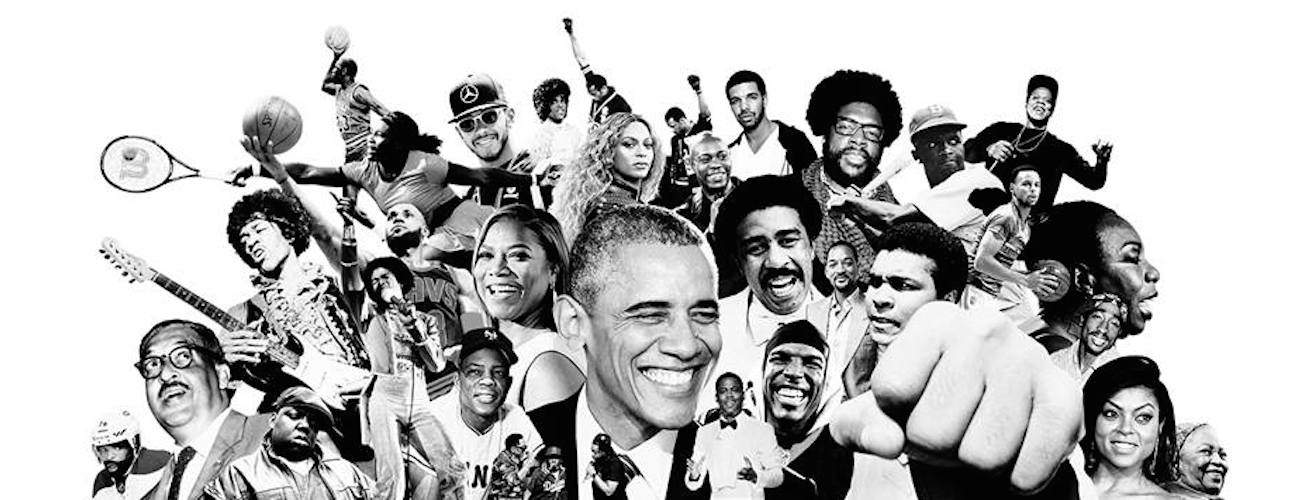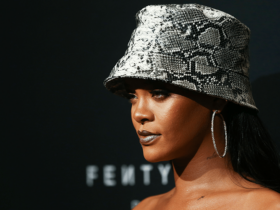What does it mean to push culture forward? No one can explain what it entails, tangibly. Thus, the conversation always lacks proper context and actual deliverables. Elevating the state of culture is absolutely realistic, but we need to get specific about what problems and results look like when addressing the layers of cultural progression. Otherwise, we’ll stick to the timelines and comment sections we’re used to, talking in circles for the foreseeable future.
The aspiration to push culture forward is rooted in a desire for improved cultural economics. Cultural economics is the relation of shared beliefs and preferences of respective groups, to economic outcomes across industries and institutions. Pop culture is a trillion dollar institution comprised of several billion dollar industries. The revenue generated in these industries is the result of beliefs, perspectives, and performance of marginalized groups. The issue at hand is that those marginalized groups aren’t reciprocated comparably to the billions earned through trends related to their style, language, athletic performance, musicianship, and more.
Hip-Hop is the highest selling genre in a music industry that generated $43 billion domestically in 2017. Artists only made 12% of that revenue. The fashion industry is dominated by womenswear, stylistically influenced by black women, and depends on female spending dollars for its $360+ million in revenue. Still, only 14% of major brands are run by women. Racial diversity on the runway has very recently increased in favor of women of color. Still, that diversity isn’t reflected in spaces where decisions are made for support through funding and education by the Council of Fashion Designers of America (CFDA). The CFDA has 500 members, and only 12 of them are black.
In tech, 76% of jobs are held by men and only 5% of those jobs are held by black and brown men. The 13 largest college athletic departments bring in over $100 million annually, largely due to revenue from basketball and football. Top schools have teams comprised of over 50% black athletes. In the past two years, 40% of these universities have seen black male student-athlete graduation rates decline. The professional sports market is slated to reach $73.5 billion by 2019. Star athletes make a fraction of the economic impact they bring to the cities they play for. Nobody’s pulling up to watch Kevin Love shoot a 15-footer. Fans want that LeBron James special.
Between 1994–2013, the number of black journalists at daily newspapers dropped by 40%. In almost 2 decades, employment of Hispanic and Asian journalists has also declined by 13% and 2 % respectively. As of 2017, white people made up 80% of the nations newsrooms while 40% of the U.S. population is made of people of color. That’s how racial stereotypes and false narratives are continuously perpetuated in coverage. There’s no diversity in top level management, or in the newsrooms of organizations responsible for reporting on a nation that is mostly non-white.
Numbers don’t lie, the cultural economics of the United States is severally off balance. There needs to be a fair distribution of education, opportunity, income, and resources relative to the groups influencing positive economic outcomes. We’ve identified the problem areas, but what do tangible solutions look like? If the following seems a bit eutopic, that’s because it is. There are numerous institutional barriers that must be reversed to truly push the culture forward. However, understanding what we’re actually asking for is a start.
Reverse Engineer Education
The groups of people whose beliefs and preferences directly correlate to positive economic outcomes, aren’t seeing that revenue trickle down into their educational opportunities. Let’s call a spade a spade, people of color inspire everything that is pop culture. We do it so organically, that we don’t think twice about what our natural inclinations are actually worth. That type of thinking requires us to place value on our cultural tendencies. It’s hard to do that when education is industrialized instead of rooted in self discovery. We learn how to function within a pre-existing society, instead of studying how our individual thought processes and talents can mold the world we live in. We’re learning how to accept circumstances rather than learning to create circumstances.
According to recent studies, about 55% of students 5th-8th grade say they have entrepreneurial ambitions. That percentage falls to 27% for students 9th-12th grade, a 35% decrease compared to this same group just 3 years ago. Between middle school and high school, the youth is losing a sense of entrepreneurial ambition when educators should be amplifying it. What’s necessary is education that encourages an entrepreneurial mindset. Individuals with entrepreneurial mindsets are often drawn to opportunities, innovation and new value creation. Emphasis on opportunity and new value creation. That doesn’t mean education should be solely focused on making everyone a business owner. It means there’s a need for curriculums that put our youth in the habit of acknowledging their natural tendencies, and assessing the opportunities those tendencies give to create economic value. You know, instead of studying the pythagorean theorem because who even uses that, but I digress.
Reinforce Media Integrity & Quality Content
Starting in 2005, the blog era and mushrooming of mainstream media blurred the line between bloggers and journalists. The Bureau of Labor Statistics found that between 2005–2015 there was a 38% decline in employed journalists. For an entire decade, approximately 25,000 journalists were laid off, and digital publishers hired about 7,000. The same report showed that the amount of journalists at digital native publishers more than tripled in the same decade. Since then, the number of journalists at digital publishers has plateaued.
If the number of employed journalists declined for 10 years, but digital sites employed journalists 3x over, who were they hiring? When media outlets transformed into digitally native sites, actual journalists were not included in the shift. Trusted platforms also bought into the ad-revenue model, page clicks meant more money so traffic took priority over quality reporting and storytelling. This sparked problematic hiring decisions. Media platforms began staffing less qualified bloggers who were cheaper to hire, or syndicating their blogs at the very least. Some of those bloggers came with the added advantage of personal relationships with talent, and large social followings. In theory, they brought an extended audience that would convert to their employer’s sites. The result was a decade worth of bloggers mistakenly perceived as journalists, publishing opinions taken as fact due to the co-sign of trusted media companies that hired them. The only thing worse than glorified misinformation is paying people to produce it.
That’s how we ended up with platforms ranging from TIME to Complex, sharing any and everything that might drive traffic. The separation between bloggers and journalists must be re-emphasized and clearly defined. Bloggers are typically subjective, and create content based on personal opinion. They are gifted products to review, and usually develop personal relationships with the people they cover. Journalists report facts fairly, tell the truth objectively, and disclose any bias. Opinions are declared openly, and never framed as facts. A blogger sources their information from mainstream media such as websites, social media, and television. Journalists are trained and required to thoroughly investigate their stories. Credibility is the line that divides these two professions.
Controlling The Narrative
The people who inspire pop culture, should be the ones documenting it. Newsrooms need to be filled with more black voices. Data from the American Society of Newspaper Editors shows that since 1998, black employees have made up less than 6% of newsrooms nationwide. As of 2016, black employees make up less than 5% of news directors. For at least 20 years, black people have had little to no control over the narrative of the mainstream industries we fuel. Specifically today as black music quite literally funds the music industry, black films break records at box office, and black athletes sell out sports arenas.
When content became king, we watched quantity take precedence over quality. When low quality dominates timelines and news feeds, standards drop over time. What do we have without standards and appropriate representation? We have subpar and culturally detached journalism, creating a misguided perception of the state of intellectual achievement in pop culture. It’s time to reverse this. Our trusted media hubs must perform their due diligence when hiring creatives to document pop culture. Furthermore, they need to do a better job of recruiting talent directly from the culture they’re covering. Lack of qualified content creators is literally pushing culture backwards.
Income and Equity Aligned With Influence on Revenue
Engagement is the digital version of gold. If any company or organization is able to establish digital engagement, it can convert that to digital sales. In 2017, video streaming revenue hit $20.1 billion. Digital video advertising will grow to $27.82 billion making it 25% of US digital ad spending slated to hit $100 billion in 2018. As it stands, there is no royalty structure in place for creators to get a reasonable share of the revenue earned from the online engagement their creations bring in. Songwriters, performers, producers, etc. are all rights holders who get a percentage of streaming revenue from their songs. It should be the same for writers, producers, designers, directors, and editors of audio and visual content. They should get royalties for every dollar their creations earn through ad sales, subscriptions, and sponsorships, on top of their salary or flat rate.
Companies like Amazon and Walmart fell under scrutiny for cutting employee stock benefits. Why? Simple, because the general public knows that cutting stock benefits is cutting the opportunity for financial freedom. It’s the same issue when it comes to creative professionals in pop culture. The new normal is about ownership, and if creators are helping to generate billions then they should see a percentage of it. They should get that access to equity, reflective of their influence on revenue. Once this becomes the standard, economic freedom will follow.
Economic Freedom By Way of Access and Resources
The idea of economic freedom has been twisted into something reserved for the rich and famous. Don’t fall for the bait, economic freedom is subjective. It looks like whatever lifestyle an individual deems enjoyable, without stressing over saving and covering basic survival needs. Best case scenario, it leads to the ability pass down property, educational tools, money, and powerful relationships. These are the keys to building generational wealth.
The creators and minority groups who pump monetary life into pop culture need to be compensated in a way that creates room for economic freedom. Fix education. Return media to a place of integrity. Implement equal opportunity employment. Create a royalty structure for creatives. Update public perception of economic freedom. None of these solutions are easily obtainable. The actions necessary to see these changes require a much deeper dive, but at the least we can know what we’re looking for when we suggest that the culture needs to be pushed forward. We can’t work toward cultural improvement without defining the problems and solutions. It’s all doable, but it’s a long-term play. I won’t come with the instant gratification we see on social media. It’s work that may not yield results that our generation can even enjoy. Most likely we won’t see the end results. If pushing culture forward means putting in work you may not reap the rewards of, will you still be for the culture? Who’s in it for the long haul?






Recent Comments